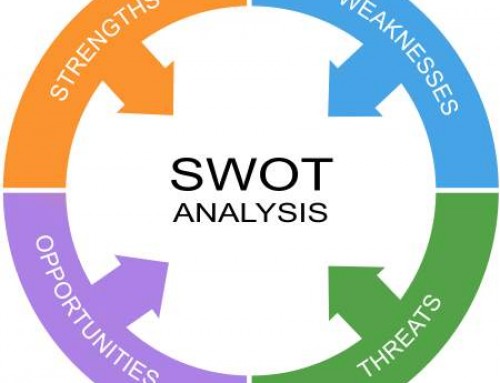Strengths-Weaknesses-Opportunities-Threats (SWOT) analysis (1) is a widely recognised method for gathering, structuring and reviewing a snap-shot of the current situation – to ultimately aid in a methodical planning process to develop a growth plan for a company.
Strategic Assessment
The SWOT labels provide a framework for reviewing the position and direction of a company. Strengths and Weaknesses are regarded as distinctly internal factors that you have some control over, whereas Opportunities and Threats are regarded as distinctly external factors, subject to market forces.
- Strengths and Weaknesses: the internal environment inside the company. For example, factors relating to products, pricing, costs, profitability, performance, quality, people, skills, adaptability, brands, services, reputation, processes, infrastructure, etc. The focus is on the present.
- Opportunities and Threats: the external environment outside the company. For example; factors relating to markets, sectors, audience, fashion, seasonality, trends, competition, economics, politics, society, culture, technology, law, media, etc. The focus is on the future.
Sometimes, SWOT is applied to just the factors that may influence the ability of a company to introduce a new product or service to the market – rather than the business as a whole.
A SWOT can be also used to assess your competition. To do this, move into the shoes of your largest competitor(s) and then conduct a self assessment.
SWOT Analysis Worked Example: Red Bull
Transitioning from the Present to the Future
Observe what is happening in your immediate circle outside of your business – this can alter your view of the operating conditions, creating awareness of both threats and opportunities.
Consider disruptions (e.g. Delayed decision making, Digital) that have the potential to bring opportunity to one business and disaster to another. We can learn from new entrants and direct competitors to take advantage of opportunities whilst turning our weaknesses into strengths.
1. SWOT analysis was founded on research conducted at Stanford Research Institute during the 1960’s. The catalyst for this research was as a response to the question “why corporate planning fails”; this research was funded by a group of Fortune 500 companies. SWOT continues to be one of most powerful planning tools available for big and small business alike.





